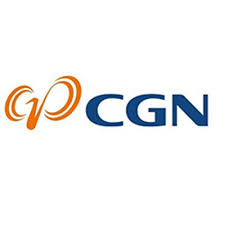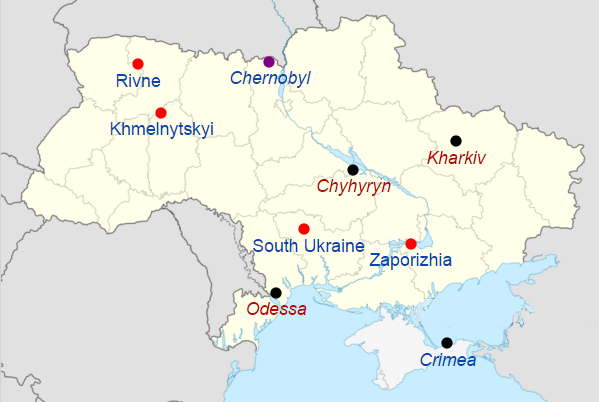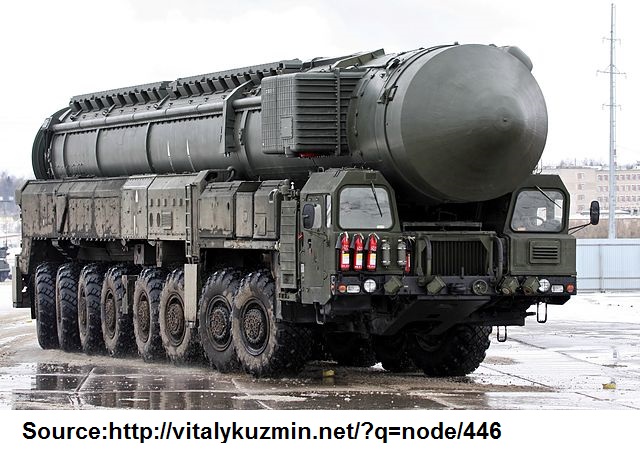
Blog
-
Geiger Readings for Apr 16, 2016
Ambient office = 111 nanosieverts per hourAmbient outside = 52 nanosieverts per hourSoil exposed to rain water = 53 nanosieverts per hourRomaine lettuce from Central Market = 58 nanosieverts per hourTap water = 108 nanosieverts per hourFiltered water = 83 nanosieverts per hourRockfish – Caught in USA = 73 nanosieverts per hour -
Nuclear Reactors 353 – China General Nuclear Power Company And U.S. Nuclear Engineer Charged With Illegal Transfer Of U.S. Nuclear Information
The China General Nuclear Power Group (CGN) is one of two Chinese state-owned companies. It operates nuclear power plants, solar power installations, wind power installations and hydroelectric plants in China. CGN is a major player in the energy industry in China and has been adapting French pressurized water reactor designs to create a Chinese reactor called the Hualong One. This design is being used to construct the majority of the new reactors being built in China.
China is also pushing for foreign sales of the Hualong One to compete with reactor designs being sold by Russia, France and Japan. China is investing in being a major exporter of nuclear technology with plans to build more than thirty nuclear reactors in Asia and Europe by 2030. China is involved in financing a massive nuclear project involving two French designed reactors in Britain at Hinkley Point. One of the conditions for Chinese involvement is permission to build a demonstration Hualong One in Britain.
Allen (Szuhsiung) Ho is a U.S. nuclear engineer who holds dual Chinese and American citizenships. He was employed by CGN in China. In the U.S., he was owner of a Delaware company named Energy Technology International. In an indictment unsealed Thursday in Tennessee, he was accused of recruiting a team of U.S. nuclear experts in order to help CGN design and build reactors in China. They were recruited to give technical assistance to CGN with respect to CGN’s small modular reactor projects, advanced nuclear fuel design, as well as “verification and validation of nuclear reactor-related computer codes.”
The U.S. Atomic Energy Act provides a method to authorize nuclear experts in the U.S. to help develop nuclear technology outside of the U.S. The new indictment against Ho claims that Ho never applied for the proper authorization. CGN is also named as a conspirator in the indictment.
Ho is accused of disregarding the authorization process and recruiting nuclear experts through his U.S. company beginning in 1997. One of the experts is an employee of the Tennessee Valley Authority. Other unnamed engineers working for other unnamed nuclear power companies were recruited from South Carolina, Pennsylvania and Colorado. Although the technological expertise that Ho was recruiting was intended for civilian use and not classified military information, it was still illegal for him to recruit without the permission of the U.S. government. Ho is also charged with the general crime of acting as the agent of a foreign government without notifying the U.S. Attorney General which is required by U.S. federal law.
In 2009, Ho communicated with a nuclear expert and said “ China has the budget to spend…. They want to bypass the research stage and go directly to the final design and manufacturing phase.” China has often been accused of stealing the technology of companies in other countries for internal use. In one case, the manuals given out with network routers were just photocopies of a U.S. technology company that made similar network routers.
If Ho is convicted on the two charges, he could face life in prison and a fine of two hundred and fifty thousand dollars. As the prosecution of Ho proceeds, it will be interesting to see if CGN pays a price for its blatant theft of U.S. nuclear expertise.
-
Radiation News Roundup Apr 15, 2016
Nuclear reactor fears after huge earthquake strikes Japan. enenews.com
A memorandum of cooperation in the field of nuclear energy for peaceful purposes has been signed by Russian state nuclear corporation Rosatom and the ministry of energy and mines of Laos. world-nuclear-news.org
The Pilgrim nuclear power plant will be refueled for the final time in 2017 and will cease operations on 31 May 2019, Entergy announced yesterday. world-nuclear-news.org
United Kingdom Capable Of Manufacturing Westinghouse Small Modular Reactors. nuclearstreet.com
-
Geiger Readings for Apr 15, 2016
Ambient office = 93 nanosieverts per hourAmbient outside = 72 nanosieverts per hourSoil exposed to rain water = 80 nanosieverts per hourBartlett pear from Central Market = 60 nanosieverts per hourTap water = 109 nanosieverts per hourFiltered water = 97 nanosieverts per hour -
Nuclear Reactors 352 – Ukraine is Working to Adapt Their Nuclear Reactor Fleet to Load Following
The easiest and most efficient mode of operation for nuclear power plants is called “baseload.” This means that the plant is set up to operate at one hundred percent power generating capacity. Coal power plants are also best operated in baseload mode. Gas power plants and hydro power plants can be adjusted relatively easily with respect to power output to meet current demand and this is called “load-following”. A mixture of both load modes works best. The baseload provides the minimum power requirements of the grid and the load-following adjusts to momentary demands above the minimum. Alternative sustainable energy sources such as solar and wind are often criticized because they cannot provide baseload power. There is intense work being done in battery technology to allow excess power generation from alternative sources to be captured for use when the source is not generating to sustain baseload power.
Although nuclear power plants are not the best source of load-following power generation, the dependency of countries such as France on nuclear power have required the development of load-following capability in nuclear power plants. In France, less absorptive control rods have been used for the past twenty five years to allow modulation of the power output of the reactors for load-following.
Ukraine has 16 reactors in four nuclear power plants that provide about half the electricity consumed in the country. Ukraine has been studying load-following for the past ten years because it is interested in adapting its fleet of VVER reactors from baseload to load-following to provide more flexibility in power generation. Ukraine targeted this year for Ukraine’s reactors to be load-following. The Ukraine nuclear company Energoatom has stated that it needs additional time and additional funding in order to make all of Ukraine’s reactors capable of load-following.
Unit Two at the Khmelnitsky nuclear power plant has been used for researching load-following. The reactor has been reduced from one hundred percent to seventy five percent power generation and then returned to one hundred percent twenty one times. During these tests, Energoatom identified which items of equipment would need to be modified and upgraded in order to allow the reactor to easily and safely operate in the load-following mode. Regulations state that in order for a reactor to be certified for operation in load-following mode, the reactor has to have the output reduced and restored at least two hundred times.
In order to make the Ukraine reactor fleet load-following, additional funding will be necessary to upgrade the equipment at each plant. In addition, each plant will have to be put through the required two hundred load change cycles to insure proper operation. Energoatom says that if the necessary funding is made available, it will take two years to upgrade and test all of Ukraine’s power reactors.
Some critics of the plan to adapt Ukraine’s reactor fleet to load-following complain that Energoatom is moving too quickly on the planning for the changes and more time is needed to insure a safe transition. The Chairman of the Ukrainian Energy Assembly has responded that research into load-following has been going on in Ukraine for ten years and that the transition project is based on solid research and engineering and is sufficient to accomplish the load-following project properly.
Location of Ukraine nuclear power plants:
-
Radiation News Roundup Apr 14, 2016
Over 60 million Japanese have been irradiated by Fukushima nuclear disaster. enenews.com
Health researchers are turning a blind eye to casualties caused by the Fukushima nuclear disaster. counterpunch.org
The US Nuclear Innovation Alliance (NIA) has issued a series of recommendations for updating the regulatory process to address an “urgent” need for an advanced reactor licensing process. world-nuclear-news.org
-
Geiger Readings for Apr 14, 2016
Ambient office = 146 nanosieverts per hourAmbient outside = 80 nanosieverts per hourSoil exposed to rain water = 72 nanosieverts per hourAvocado from Central Market = 93 nanosieverts per hourTap water = 75 nanosieverts per hourFiltered water = 66 nanosieverts per hour -
Nuclear Weapons 199- Russians Expanding Their Nuclear Forces
I have been blogging on international nuclear security issues lately. Yesterday, I wrote about the 2016 Nuclear Security Summit, a meeting of nations concerned with nuclear security and terrorist threats. Much progress has been made in making nuclear materials more secure around the globe but much remains to be done. Unfortunately, the U.S. and Russia have experienced a decline in their relationship and Russia did not attend the Summit.
Both the U.S. and Russia have around five thousand nuclear warheads that they can deliver with the triad of bombers, missiles and submarines. Of these, each has about fifteen hundred that are currently deployed and ready for launch. Since it is estimated that the detonation of as few as a hundred nuclear warheads could bring on a civilization-ending nuclear winter, calling this overkill is a serious understatement. Despite a claimed commitment to nuclear disarmament and multiple treaties to accomplish it, both countries are currently working on increasing their nuclear arsenals.
Pentagon officials have recently reported that Russia is doubling the number of its strategic nuclear warheads. They are deploying multiple reentry vehicles which are independently targetable and referred to as MIRVs on their mobile SS-27 missiles as well as submarine-launched SS-N-32 missiles. This deployment put Moscow well above the limits set for warheads under the 2010 New START arms treaty which calls for Russia and the U.S. to reduce their deployable warheads to one thousand five hundred and fifty by February of 2018. The U.S. is currently below the limit at one thousand five hundred and thirty eight while Russia has exceeded the limit by ninety eight warheads for a total of one thousand six hundred and forty eight. The Pentagon also said that the Russians were trying to prevent weapons inspectors from checking Russian warheads.
Russia has been working on a major nuclear forces expansion lately. They are building road-mobile, rail-mobile and silo-based intercontinental ballistic missiles (ICBMs) as well as modernizing the missiles in their nuclear submarines. They are also building a new long-range bomber. Although the Russians have been involved in a series of disarmament treaties and have converted a lot of plutonium from Cold War era Soviet nuclear weapons to nuclear reactor fuel, they have also been working on the build-up of their nuclear forces for more than fifteen years.
This expansion of Russian nuclear forces is a grave concern for U.S. military planners. The Russian government under Vladimir Putin has become increasingly belligerent in the past few years. Russia has been invading other countries airspaces with nuclear bombers and other nations territorial waters with nuclear submarines. He has been talking casually about using tactical nuclear weapons in Eastern Europe in a conventional war with NATO forces. In response, the Pentagon is seeking more funds for modernizing the aging U.S. nuclear forces after seven years of cuts in the U.S. defense budget. Current and former U.S. officials say that Russia is the greatest threat to the security of the U.S. in the world, especially in light of their recent behavior and statements.
Russian SS-27 mobile missile:
-
Radiation News Roundup Apr 13, 2016
Japan Prepares for Release of Tritium From Fukushima Plant. nytimes.com
The U.S. federal government is moving to impose new cybersecurity requirements on nuclear facilities. thehill.com
Luxembourg offers France money to close nuclear plant. en.rfi.fr
Moscow rejects Pyongyang’s claim to the status of a nuclear power possessing atomic weapons and means of their delivery. sputniknews.com
-
Geiger Readings for Apr 13, 2016
Ambient office = 95 nanosieverts per hourAmbient outside = 93 nanosieverts per hourSoil exposed to rain water = 103 nanosieverts per hourOrange bell pepper from Central Market = 87 nanosieverts per hourTap water = 100 nanosieverts per hourFiltered water = 93 nanosieverts per hour






